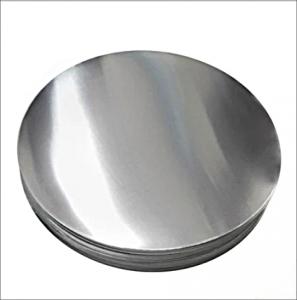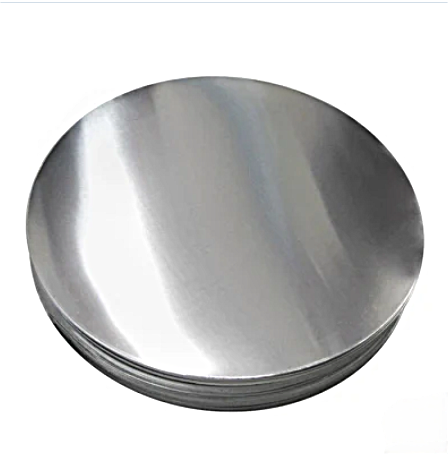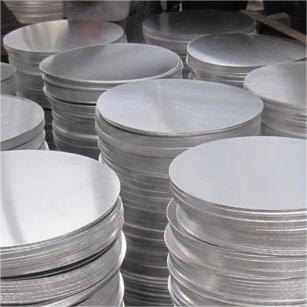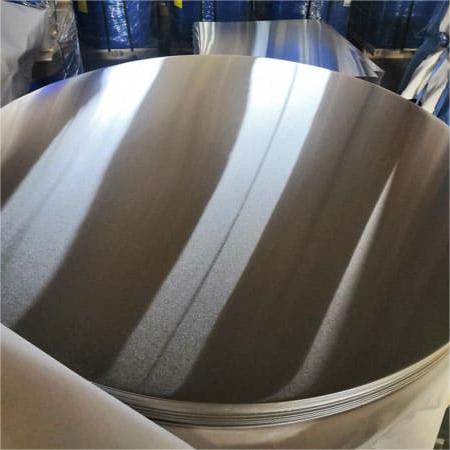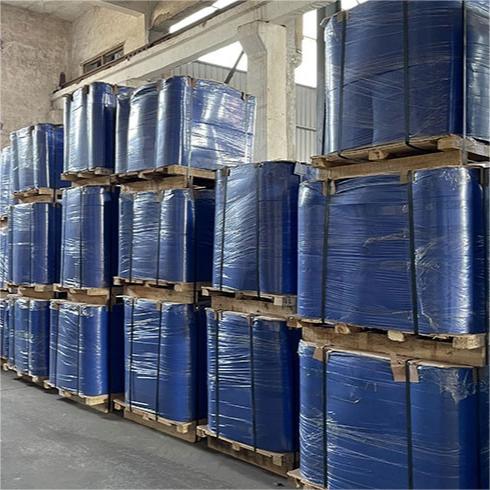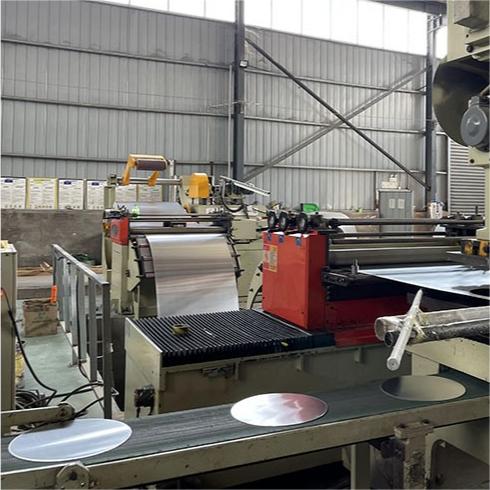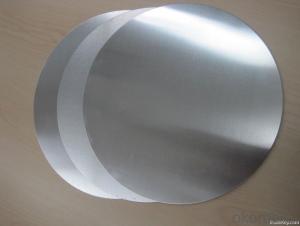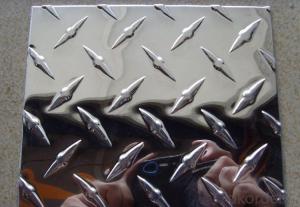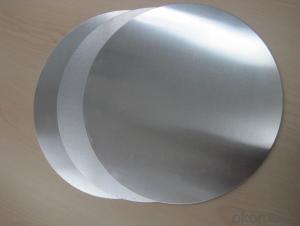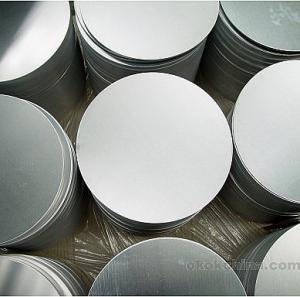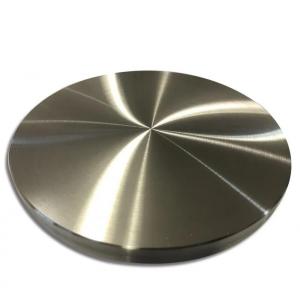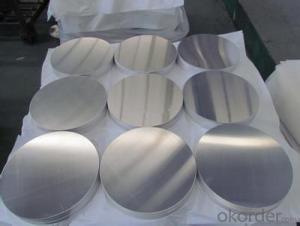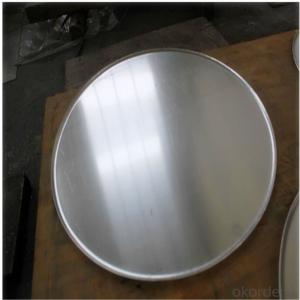Aluminium Circle and Circles Round Shape
- Loading Port:
- China main port
- Payment Terms:
- TT or LC
- Min Order Qty:
- 3 m.t.
- Supply Capability:
- 100000 m.t./month
OKorder Service Pledge
OKorder Financial Service
You Might Also Like
Aluminum circles, also known as aluminum discs or blanks, are flat, round pieces of aluminum that are commonly used in various industries for manufacturing cookware, traffic signs, lighting components, and decorative items. These circles are produced through a process that involves rolling aluminum sheets into thin, flat discs of varying diameters and thicknesses. Known for their lightweight, durability, and excellent thermal conductivity, aluminum circles are a popular choice for applications that require both formability and high performance.
Advantages:
Recyclability: Fully recyclable, making them an environmentally friendly option for reducing carbon footprint.
Lightweight: Significantly lighter than other metal counterparts, reducing handling difficulty and transportation costs.
Durability: Excellent resistance to corrosion and wear, ensuring longevity in various applications.
Thermal Conductivity: High thermal conductivity, ideal for cookware and heat exchangers where efficient heat transfer is essential.
Formability: Easy to form and shape, providing versatility for a wide range of products and applications.
Aesthetic Appeal: Clean, metallic appearance that is visually appealing, suitable for decorative and architectural uses.
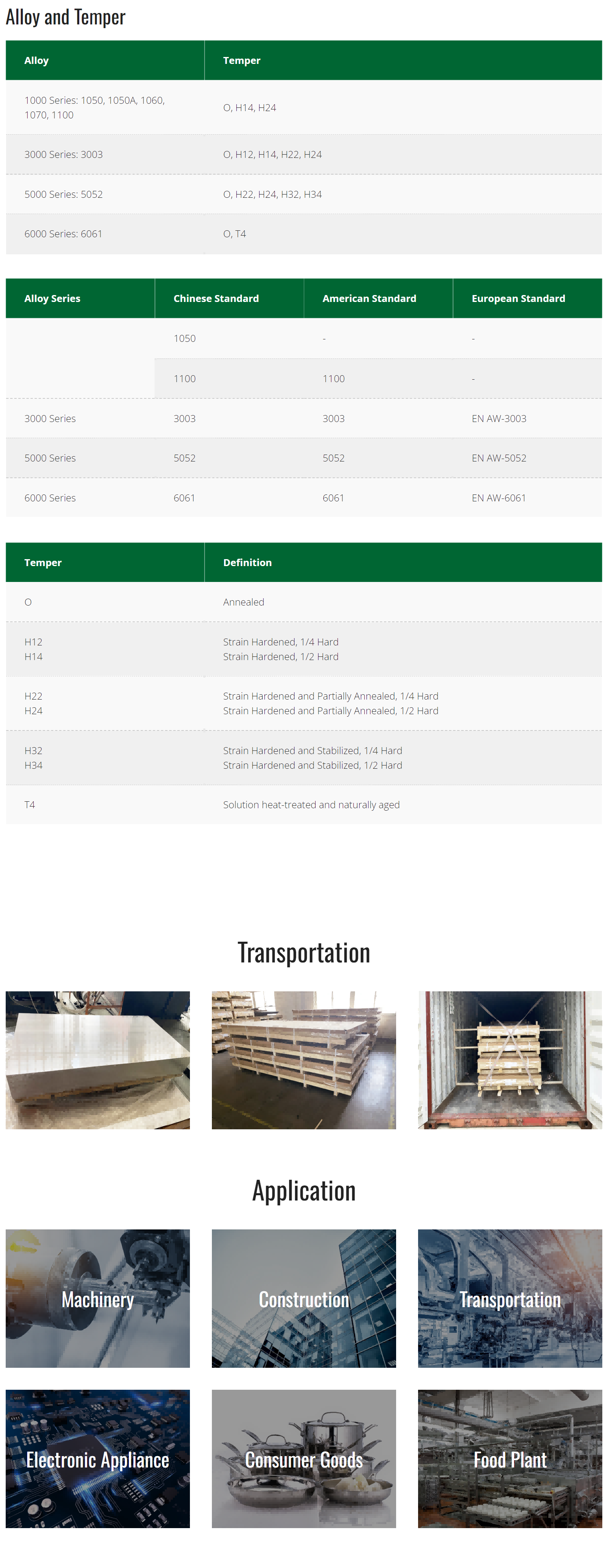
FAQ:
1.what is aluminum?
Aluminium (or aluminum; see spelling differences) is a chemical element in the boron group with symbol Al and atomic number 13. It is a silvery white, soft, nonmagnetic, ductile metal. Aluminium is the third most abundant element (after oxygen and silicon), and the most abundant metal in the Earth's crust. It makes up about 8% by weight of the Earth's solid surface.
Aluminium metal is so chemically reactive that native specimens are rare and limited to extreme reducing environments. Instead, it is found combined in over 270 different minerals.The chief ore of aluminium is bauxite.
2.What's kind of payment term we can supply?
CIF,CFR, FOB and other.
3.Can we supply samples?
Yes, we can!
- Q: What other materials can be used as substitutes for aluminum in various applications?
- <p>Alternative materials to aluminum include magnesium, which is lighter and often used in automotive and aerospace applications; titanium, known for its strength and corrosion resistance, though more expensive; copper, utilized for its excellent electrical conductivity; and steel, which is stronger and more durable but heavier. Additionally, composite materials like carbon fiber and fiberglass offer weight savings and high strength, though they can be more complex to manufacture. Each alternative has its own set of advantages and disadvantages depending on the specific application and requirements.</p>
- Q: This question asks for the typical origins of aluminum in the environment.
- <p>Aluminum is the most abundant metal in the Earth's crust, and it is widely present in the environment. Common sources include: 1) Natural weathering of rocks and soil, which releases aluminum into the environment. 2) Industrial processes such as aluminum production, which can release aluminum into the air and water. 3) Food and water, where aluminum can be found naturally or as a result of contamination. 4) Household products like aluminum foil, cans, and cookware, which can contribute to aluminum exposure. 5) Medications and vaccines, which sometimes contain aluminum as an adjuvant. 6) Cosmetics and personal care products, which may contain aluminum compounds. These sources contribute to the overall aluminum exposure in the environment and to humans.</p>
- Q: This question asks about the amount of energy needed to produce aluminum.
- <p>The energy required for the production of aluminum is substantial. Producing one ton of aluminum typically requires around 15-25 kilowatt-hours of electricity, largely due to the process of electrolysis, which is used to extract aluminum from its ore, bauxite. This high energy consumption is a significant factor in aluminum production costs and environmental impact. The energy required can vary based on the efficiency of the smelting process and the source of electricity used.</p>
- Q: Explain how the incorporation of titanium into aluminum alloys influences their properties and strength.
- <p>Adding titanium to aluminum alloys significantly enhances their mechanical properties and strength. Titanium increases the alloy's strength, hardness, and resistance to corrosion. It also improves the alloy's creep resistance, which is crucial for high-temperature applications. The addition of titanium refines the grain structure, leading to better ductility and toughness. Moreover, titanium helps to reduce the likelihood of stress-corrosion cracking, making the alloy more reliable in aggressive environments. Overall, titanium-aluminum alloys are stronger, more durable, and have a wider range of applications than pure aluminum or simple aluminum alloys.</p>
- Q: Is it possible to utilize aluminum in the creation of innovative electronic devices?
- <p>Yes, aluminum can be used to make new types of electronic devices. Aluminum is a lightweight, corrosion-resistant, and highly conductive material, making it ideal for various electronic components. It's commonly used in heat sinks, casings, and wiring due to its thermal and electrical conductivity. Additionally, aluminum's malleability allows it to be shaped into intricate parts, which can be beneficial for compact and innovative designs in electronics. Furthermore, its abundance and low cost make it an attractive material for manufacturing new electronic devices.</p>
- Q: Can aluminum be recycled repeatedly without losing its quality or strength?
- <p>Yes, aluminum can be recycled multiple times without significant degradation in quality or strength. The recycling process retains most of its original properties, making it one of the most sustainable materials. Each recycling cycle does not diminish its performance, unlike some other materials. This characteristic makes aluminum a valuable resource in reducing waste and conserving energy.</p>
- Q: This question asks for various applications or purposes that can be served by using aluminum scrap material.
- <p>Aluminum scrap can be repurposed in numerous ways due to its recyclability and durability. Some alternative uses include manufacturing new aluminum products, such as cans, foil, and automotive parts. It can also be used in construction for materials like window frames and roofing. Additionally, aluminum scrap is utilized in the production of everyday items like bicycles, furniture, and even in some types of cookware. Furthermore, it can be employed in the aerospace industry for aircraft parts and in the electronics industry for components. Recycling aluminum scrap not only conserves resources but also reduces energy consumption and environmental impact.</p>
- Q: Is it possible to recycle aluminum from old products to create new ones?
- <p>Yes, aluminum can be recycled to make new products from old ones. Recycling aluminum is a highly efficient process that requires only 5% of the energy needed to produce new aluminum from raw materials. This process is not only environmentally friendly but also economically viable. Recycled aluminum maintains its quality and can be used to create a wide range of new products, from cans and packaging to automotive parts and construction materials.</p>
- Q: Compared with other aluminum veneers, what are the advantages?
- 1, exquisite appearance, grain pattern rich, realistic effect, clear texture.2, fire resistance: corrosion resistance, moisture resistance, hardness and strength are compared to wood floating method.3, rust prevention, anti damage, UV protection.4, long service life, can maintain 10-15 years without color, no deformation.5, strong plasticity, can be processed into a variety of complex shapes, the back of which can be filled with insulation, sound insulation, sound-absorbing and other materials, so that its function more rich.6, environmental protection, ecological environment protection, reduce waste of materials and resources.
- Q: Is it possible to utilize aluminum in the creation of innovative tools and equipment?
- <p>Yes, aluminum can be used to make new types of tools and equipment. It is a lightweight, durable, and corrosion-resistant metal, making it ideal for various applications. Aluminum's high strength-to-weight ratio and ease of machinability allow it to be used in the manufacturing of tools, machinery parts, and equipment across industries such as automotive, aerospace, and construction. Additionally, its recyclability and abundance make it an environmentally friendly choice for new tool and equipment designs.</p>
Send your message to us
Aluminium Circle and Circles Round Shape
- Loading Port:
- China main port
- Payment Terms:
- TT or LC
- Min Order Qty:
- 3 m.t.
- Supply Capability:
- 100000 m.t./month
OKorder Service Pledge
OKorder Financial Service
Similar products
Hot products
Hot Searches
Related keywords
